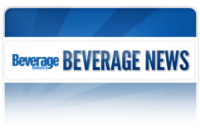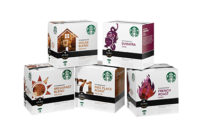Mobile apps and Web technology are making many daily tasks, such as grocery shopping, easier for consumers. Online shopping databases can help consumers find the best retail deals for products on their shopping lists, while store-specific mobile apps can help them to plan their shopping trips and watch for sales at their favorite stores. Whole Foods Market, Jewel-Osco, Aldi, 7-Eleven, Target and other retailers offer mobile apps that allow consumers to view product offerings, receive weekly sales ads, redeem coupons, and even build shopping lists based on recipes. These resources, in combination with data captured through social media and loyalty card programs, can aid in retailers’ and manufacturers’ efforts to optimize shopper satisfaction through category management.
From these digital sources, more than 2.5 quintillion bits of new data are created and stored every day by the fast-moving consumer goods (FMCG) market alone, according to the Wimberley, Texas-based Category Management Association’s 2013 report “Three Trends Changing the FMCG Ecosystem.” Consumer packaged goods companies and retailers need to find ways to organize this “big data” around product categories in order to discover unmet needs in the marketplace, the emotional factors driving shopper needs, where key communication touch points should be located, and what benefits marketers need to offer in order to clinch the sale, according to the Category Management Association’s report “Category Management Mastery: The key to growth!”.
This data has helped retailers be smarter about assorting the goods within their stores to meet the needs of their specific shopper audiences, says Jackie Gray, director at Willard Bishop LLC, Barrington, Ill. The market research firm conducted an assortment localization study in 2013 in order to identify categories that require assortment at a local level, as opposed to the regional or chain-wide levels, she explains. After monitoring millions of households for two years across three major retailers, Willard Bishop found that not all categories need broad-based variety. Instead, many categories need to be stocked with core brands and SKUs to satisfy shopper needs, she notes.
On the other hand, some categories need to offer a wide variety of products to meet consumer interests. Specifically within the carbonated soft drinks (CSDs) category, consumers expect stores to stock a wide range of options, says Jonas Feliciano, beverage analyst at Chicago-based Euromonitor International. “In the realm of soft drinks, the variety of beverages, both in terms of brand and category, has never been higher,” he says. “This has affected consumer shopping behavior in that stores must be able to provide the variety consumers expect.” Retailers should respond to this by increasing the variance of products available to consumers or by providing both an experience and a selection that is unavailable online, such as customer service, discount pricing and fresher products, he explains. Discount pricing has been especially important in helping to drive in-store purchases of CSDs and bottled water, he adds.
Increased merchandising support also has boosted sales within various beverage categories in the last year. The drug store channel, in particular, significantly increased its merchandising support across key beverage categories, says Susan Viamari, editor of Times & Trends at Chicago-based Information Resources Inc. (IRI). As a result, energy drink sales in the channel increased 5.4 percent, coffee sales grew 8.5 percent, and bagged and loose-leaf tea sales rose 3.7 percent in the last year, she reports.
For energy drinks in the drug store channel, percent volume sold with display merchandising climbed 2.5 percentage points, while feature and display merchandising activity climbed 0.4 percentage points in the term, Viamari reports.
Among overall coffee sales, 39 percent of volume was sold with merchandising support last year, marking an increase of 2 percentage points versus the prior year, Viamari says. These sales were bolstered by increased display activity, as percent volume sold with this merchandising strategy increased 1.7 percentage points to 8.4 percent in the last year, she reports.
Merchandising support also was strong for bottled water in the last year at 44 percent, which is a 3.3 percentage point increase versus the prior year. Although merchandising support for bottled water increased among all of IRI’s merchandising tactics — display only, feature only, price only, and feature and display — the biggest increase was in feature and display combined support at 11 percent, marking a 1.3 percentage point increase compared with the prior year, Viamari explains.
Some in-store displays also support cross-merchandising between different categories, Willard Bishop’s Gray says. For example, some retailers co-locate wine, beer and grab-and-go meals to help shoppers round out their dining experience, she explains. Similarly, some stores place wine near specialty cheeses to promote this pairing as well, she adds.
Looking for the sweet spot
Even though liquid concentrate products will mark two years in the market this year, the products have not yet found a permanent home on retail shelves.
“From its inception, Kraft was looking to pair liquid concentrate products next to bottled water to drive sales,” explains Jonas Feliciano, beverage analyst at Euromonitor International. “Seeing the success of the product made retailers more amiable to such placement, and [they] eventually moved them to on-the-go impulse locations, such as checkout aisles or cashier counters.”
On the other hand, Jackie Gray, director at Willard Bishop LLC, says liquid concentrates are typically merchandised with powdered drink mixes and alternative or functional beverages. “[Liquid concentrates] have yet to make their way over to the bottled water section,” she says.
Perhaps further category management data analysis will help retailers uncover in what category these beverage products belong in order to solidify their position on the beverage shelf.





